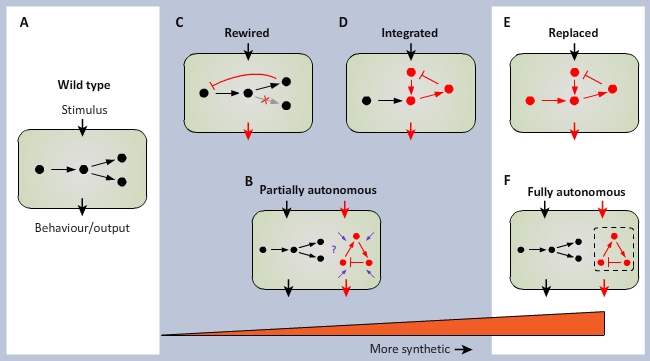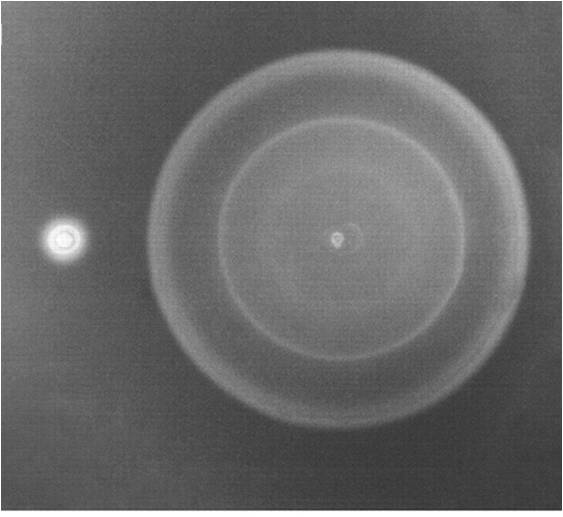Language:  English, English,  Deutsch Deutsch
Welcome to iGEM Göttingen
iGEM is an international competition hosted by the MIT in Boston, USA, for undergraduate students
of disciplines related to molecular biology. iGEM stands for International Genetically Engineered
Machine competition. On the one hand, it targets to combine aspects of education and social
collaboration among undergraduate students, on the other hand, it provides a library for
standardized and interchangeable parts which can be used in living systems, particularly
in model organisms like E. coli. Student groups from all over the world will receive a
requested kit of biological parts, also called "biobricks", and work over the summer on
an individual research project. Every year, the "Registry of Standard Biological Parts"
is upgraded with further biobricks by the participating iGEM teams. These biobricks will
be accessible to the iGEM community in the following years in order to use these parts for
their own projects.
The iGEM competition started in 2003 as a course for students of the MIT only. 2011,
already 165 universities from all over the world competed against each other. This year,
it is the first participation of the University of Göttingen, Germany. The iGEM competition
is a great opportunity for students to gain and improve a multitude of skills that are
necessary during a carrier as a molecular biologist. Such skills would be planning and
organizing a project, including fund raising and team recruitment, coordination of lab
work, designing experiments and working together as a team. Next to intensive lab work
during the summer, also literature search and well-structured documentation of the
experiments is crucial. Moreover, safety for humans and environment is key.
Homing Coli
Escherichia coli is a commonly used bacterial model organism. It has lots of beneficial
traits, e.g. a short generation time and it can be easily manipulated. Most E. coli
strains that are used in laboratories do not exhibit high motility. The crucial element for
motility is the flagellum, which is rotated by a molecular motor within the cell wall.
Consequently, these are reduced in cultivated E. coli strains.
Our goal is to create an E. coli strain with increased swimming motility on special
agar plates. Therefore, we will overexpress regulators and parts of the E. coli flagellum in cultivated strains in order to enhance bacterial swimming ability. The fastest E. coli strains will be selected and
further improved. At the same time we will then be able to create an effective motility-selection
method.
Now, you are probably wondering what the advantage of a fast E. coli might be. The
beneficial fast phenotype can be combined with the ability of this bacterium to sense
specific compounds in their environments. Chemoreceptors enable it to move towards
or along gradients of such substances. We will use PCR-based site directed mutagenesis on the E. coli TAR receptor. The combination of speed and chemotaxis allows
us to identify E. coli strains, which can sense interesting compounds. Thereby, an
easy method for the detection of pollutants, toxins or even tumors could be provided.
Synthetic Biology
Synthetic biology is an interdisciplinary scientific area that has recently developed.
It links various fields of science like biology, chemistry, physics, molecular genetics,
informatics and engineering.
Due to this combination the relation of biological design and function can be investigated
from an entirely new perspective. The previous approach was limited to the examination of
a structure and its function and the attempt to explain how they correlate.
Recently, the reverse strategy is applied. Biological parts are specifically designed and
constructed according to a desired function. These parts are characterized by a standardized
modular design that facilitates their handling. The subsequent introduction of the synthetic
constructs to living cells can either cause the replacement of original cellular components
or result in additional elements that act cooperatively or more or less autonomously (see fig. 1).

After Nandagopaland and Elowitz (2011). A continuum of synthetic biology. Wild-type cells (A) can be subject to two basic types of synthetic manipulation. (B) Autonomous synthetic circuits, consisting of ectopic components, may be introduced into the cell. Such circuits process inputs and implement functions (red arrows) seperate from the endogenous circuitry (black). However, unknown interactions with the host cell may affect their function (purple arrows) (C)An alternative is to rewire (red lines) the endogenous circuits themselves to have new connectivity. (D) Extending this line of synthetic manipulation, synthetic circuits could be integrated into appropriately rewired endogenous circuitry to act as sensors and to implent additional functionality. Ultimate goals of this program are to be able to design and construct (E) synthetic circuits that can functionality replace endogenous circuits or (F) fully autonomous circuits that operate independently of the cellular mileu.
Nagarajan Nandagopal and Michael B. Elowitz. (2011). Synthetic Biology: Integrated
Gene Circuits. SCIENCE, Vol. 333: 1244-1248.
Another very important and necessary feature of biological parts is orthogonality,
which means in this context that independent devices can be combined unrestrictedly.
This principle derives from the area of engineering and aims to alter subsystems,
without impeding others.
This way cells can be modified as requested, resulting in a predictable behaviour.
Among others, this technique can be beneficial for the effective production of
certain substances, like biofuels or antibiotics.
↑ Return to top
|
Flash Coli
|
 "
"

